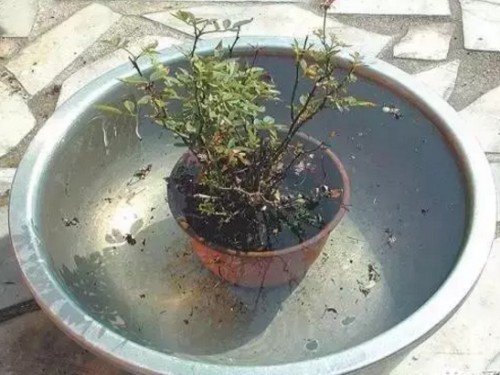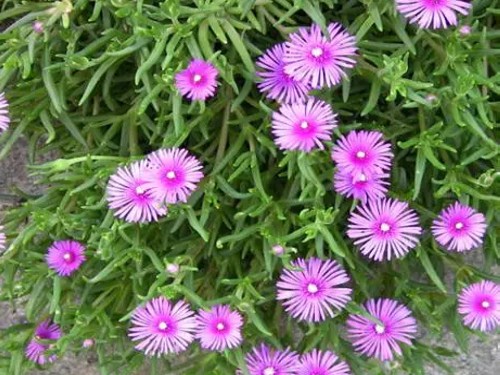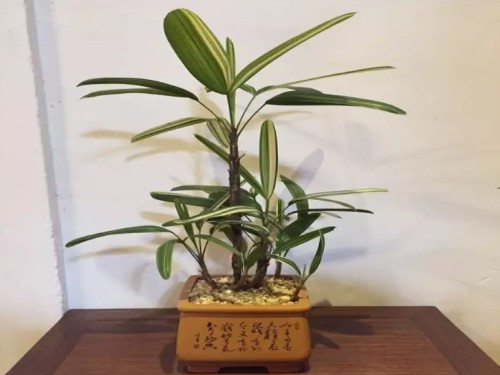What if there are ants in the bonsai?
When growing flowers, flower friends may often encounter flowers being damaged by ants, especially potted flowers. So how to control the ants in potted flowers? The following is to introduce several methods to prevent and control ant damage for flower friends.
How to control the ants in potted flowers? When growing flowers, flower friends may often encounter flowers being damaged by ants, especially potted flowers. So how to control the ants in potted flowers?
First, eliminate the ant source
Potted flowers should be kept away from the ant nest. If you find that there are ants in the basin soil, first follow the ant's crawling route, find the ant nest, and destroy it with water flooding, fire, spraying and other methods. Then sprinkle some lime on the ant nest and the creeping route of the ants to prevent the ants from harming again.

II. Physical prevention and control
1. When using mature fertilizer, base fertilizer or organic fertilizer, you must use fully fermented, mature organic fertilizer, do not use raw fertilizer or semi-mature fertilizer, so as not to cause ants to look for food.
2. Cleaning the remaining droppings of flies, moths, aphids, mites and other insects on the leaf surface is easy to attract ants to find food, so it is necessary to often wash the leaf surface with clean water to keep it clean. At the same time, we should often clean the ground and keep the potted flower conservation land clean and hygienic, so as not to attract ants with odorous substances.
3. Soak the potted flowers that have been harmed by ants and soak them in a bucket filled with water for 30 to 60 minutes. Ants can not withstand flooding, will all climb out of the basin soil, at this time can be floating on the surface of the water and climbing on the stems and leaves of potted flowers to eliminate the ants.
4. Garlic repels worms by peeling garlic, smashing it, and burying these detritus into the basin soil. Ants will escape by themselves after being fumigated with garlic.
5. Turning the basin to remove the plants that have built nests in the roots, the most effective way is to turn the basin in the pool and wipe out all the ants. Then wash the roots of the plant and cultivate potted flowers with sterilized new potted soil.
III. Chemical control
1. Before disinfecting the basin soil, disinfect the basin soil with 40% formalin, 65% Dysen zinc powder, 50% carbendazim powder and other agents to kill termites, ants and their eggs in the basin soil.
2. Bury the medicinal soil with 1 part of 50% trichlorfon wettable powder and 50 parts of sifted fine soil to make the medicinal soil, and then bury the medicinal soil at equal distance into the basin soil to eliminate ants.
3. The irrigating solution is not suitable for turning the pot in hot weather, burying the plant with no obvious effect in the medicinal soil and seriously damaged, or the plant in which the ant has built a nest in the pot soil, use 1000 grams of phoxim EC 10 grams to water 500 to 1000 grams, or 1000 grams of water mixed with 40% dimethoate emulsion 5 to 10 grams into the medicine solution, pour the solution into the pot soil and the place where there are ants, and then seal the whole flowerpot with a plastic bag for 12 hours, all the ants can be killed.
Termites and ants do great harm to potted flowers, which not only eat the stem, but also destroy the root system of the plant, resulting in the weakening of the plant's ability to absorb and transfer nutrition and water, and finally lead to poor plant growth, wilting and even death. So flower friends must pay attention to prevention and control.
Novice gardeners do not know the harm of ants to growing flowers, so they want not to hurt them. In fact, they are the enemies of growing flowers! Ants raise aphids, scale insects, etc., and move pests from one plant to another (otherwise do you think they can fly? )
Ants like the droppings of aphids and scale insects (honey for them), so they will help pests harm plants, so flower growers should get rid of ants as soon as possible. You can sprinkle some soaked citrus water next to the flowerpot (lemons are the most effective) to prevent ants from invading.
Here are the four simplest methods:
1. Soak in clean water
First fill a large basin with clear water, then soak the pot completely into the water, submerge the pot with water, soak for 20 minutes and then pick up the pot, so that the ants will all drown.
2. Chemical poisoning
Agricultural drugstores and agricultural stores sell some ant poison (like rat poison). Ants will die when they eat it and buy some to be put in places where ants are infested or on the side of their path.
3. Soapy water irrigation
This method requires your plant to grow strong and withstand twists and turns. Mix soapy water with water, dilute it 500 times, then pour it into the soil, leave the flowerpot for 30 minutes, and then water it with clear water. Repeat a few times, you can clean up the ants in the flowerpot, and it is also most effective for other small reptiles in the soil.
Pay attention to the amount of control, if the plant is weak, do not do this.
4. Pesticide spraying
Buy permethrin insecticides that kill insects directly from agricultural drugstores, such as common insecticides, which are sprayed directly into ant-infested places and flowerpots, with the advantage of being simple and fast, while the disadvantage is that they cannot be completely removed, nor can they be killed in the soil.
Family flower cultivation often causes ant damage, ants not only affect the growth of flowers and trees, and even cause the death of flowers and trees, but also damage furniture, pollute food, and bring a lot of trouble to florists. Here are several simple prevention and control methods:
1. Soil exchange method
The number of raising flowers is small, and if the ant damage is found earlier, the soil can be thoroughly changed immediately in order to thoroughly remove the ants. The method is to thoroughly replace the original soil with ants and their eggs with fresh soil, thoroughly disinfect the soil, check that there are no ant eggs before use, wash the flowerpot carefully before putting it into the new soil, and treat the soil with insecticides in time. The place where the flowerpot is placed after changing the soil should be sprayed with Metronidazole or other insecticides.
2. Spraying method
For those with a large number of ants and a wide range of activities, during the peak period of ant activity in summer and autumn, Mianshiling can be used to spray the surface of the potted soil and around the flowerpot, paying attention to the fact that the liquid cannot be sprinkled on the flowers and leaves, usually once every 5 days. Spraying 5 times continuously can control the harm of ants.
3. Method of planting medicine
It is found that there are ants in the flowerpot soil, which can be buried in the soil with animal trichlorfon tablets in and around the ant nest. According to the size of the flowerpot, generally 5-8 pieces are appropriate, and then water thoroughly every day, and the ants in the pot can be killed after 7 days.
4. Trapping and killing method
20 cm next to the flowerpot where the ant is found, use a small piece of pig skin or chicken bone to trap and kill, do not put any medicine in the trap, generally the meat skin or chicken bone will be found by the ant after 2-3 hours, and the ant will pour out in order to carry the food. at this time, spray with the exterminator, trap and kill once every 10 days, you can gradually destroy the ants.
Time: 2019-06-01 Click:
- Prev

When does pine leaf chrysanthemum blossom?-maintenance of pine leaf chrysanthemum during flowering period
Pine chrysanthemum, also known as dragon beard Begonia, is native to southern Africa. Like warm, dry and sunny environment, neither cold-resistant, but also afraid of high temperature, afraid of waterlogging, resistant to drought. The flower color of pine leaf chrysanthemum is bright and bright, and the small petals have a velvet feeling. During the growing season, you will be exposed to at least 6 hours of sunlight every day.
- Next

What about the bugs growing on bonsai?
Spring is a frequent period of flower diseases and insect pests, common diseases and insect pests are: aphids, shell insects, red spiders, blight, rust, powdery mildew and so on. So how do you get rid of those hateful bugs? First of all, let's learn about the following common insect pests.
Related
- Fuxing push coffee new agricultural production and marketing class: lack of small-scale processing plants
- Jujube rice field leisure farm deep ploughing Yilan for five years to create a space for organic food and play
- Nongyu Farm-A trial of organic papaya for brave women with advanced technology
- Four points for attention in the prevention and control of diseases and insect pests of edible fungi
- How to add nutrient solution to Edible Fungi
- Is there any good way to control edible fungus mites?
- Open Inoculation Technology of Edible Fungi
- Is there any clever way to use fertilizer for edible fungus in winter?
- What agents are used to kill the pathogens of edible fungi in the mushroom shed?
- Rapid drying of Edible Fungi

